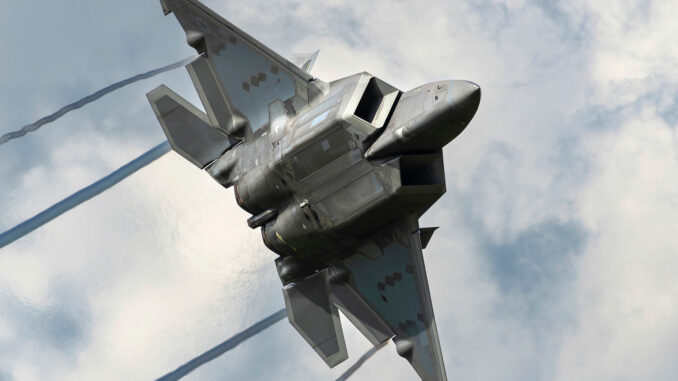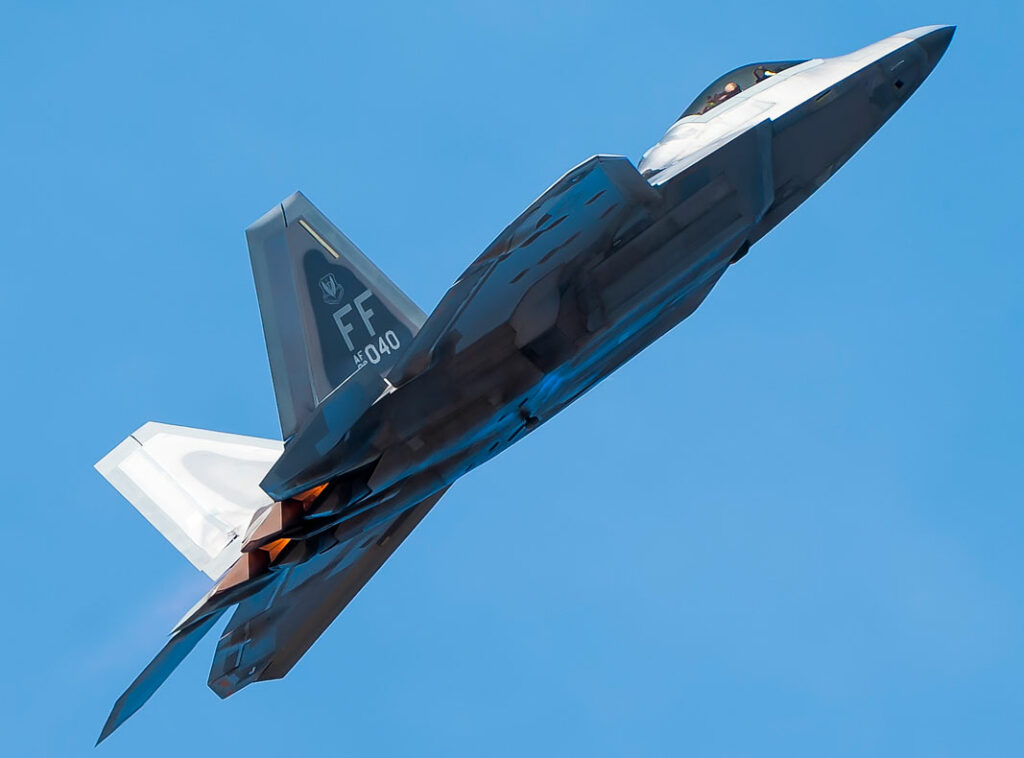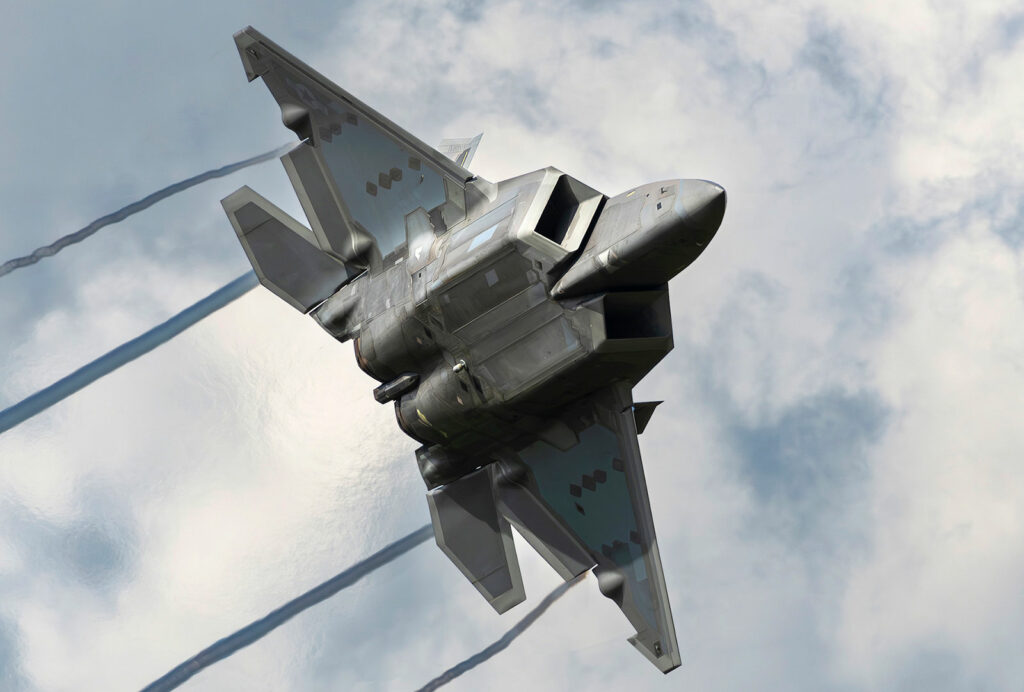
Find out why the F-22 Raptor, the first fifth-generation fighter jet, is banned from export by a 1998 US law.
The F-22 Raptor, designed by Lockheed Martin and Boeing, is a fifth-generation fighter with advanced capabilities. Its supersonic speed, agility and stealth technologies make it unique. However, a 1998 U.S. law prohibits its export to preserve its technological secrets. With only 195 units produced and a development cost of 67.3 billion euros, it remains exclusive to the US Air Force, despite worldwide interest.
Strict legal prohibition
In 1998, the U.S. Congress passed H.R. 2266, prohibiting all sales or export licenses for the F-22 Raptor. This decision was taken to protect strategic technologies, such as its stealth capabilities, which give it a significant advantage in air combat. Furthermore, as these technologies are classified as Top Secret, their disclosure could compromise national security.
In 2009, an attempt was made to create an exportable version. However, cost estimates for an adaptation were exorbitant, reaching 13 billion euros, including the removal of the F-22’s most advanced systems. This economic barrier, combined with the cessation of production in 2011, definitively closed any possibility of export.

Exceptional capabilities
The F-22 Raptor was designed to replace the F-15 Eagle as an air superiority aircraft. Its performance is impressive:
- Maximum speed: Mach 2.0 (3,200 km/h).
- Supercruise: Mach 1.5 (2,470 km/h) without afterburner, enabling extended high-speed missions.
- Maneuverability: thanks to its 15,875 kg of vectored thrust from a Pratt & Whitney F119-PW-100 engine.
Equally impressive is its armament:
- Three internal compartments housing :
- Two AIM-9 Sidewinder missiles,
- Six AIM-120 AMRAAM missiles,
- Two 454 kg JDAM bombs or eight small bombs.
- A 20 mm M61A2 Vulcan cannon for close combat.
The internal integration of these weapons preserves their stealth, a decisive asset in evading radar.
Economic and strategic impact
Production of the F-22 is limited to 195 units, well below the 750 originally planned. This reduction is mainly due to its high cost: 292 million euros per unit, including development.
The total program cost of 67.3 billion euros prompted the Pentagon to prioritize the cheaper and more versatile F-35 Lightning II. The latter is now being exported to allies such as Japan, Australia and the UK, consolidating US dominance of the global arms market, with a 40% market share.
Geopolitical consequences
The fact that the F-22 is not exported limits its international influence, but preserves American technological advantages. This exclusivity reinforces the image of the US Air Force as a dominant and dissuasive force. However, it also encourages competitors such as China (with the Chengdu J-20) and Russia (with the Sukhoi Su-57) to develop their own fifth-generation technologies.
Although the F-35 meets some of our allies’ needs, they are demanding more powerful aircraft to compete with these new players. Thus, the debate about partially lifting the ban remains alive, but economic and strategic considerations make such a change unlikely.

An exclusive symbol of American air power
The F-22 Raptor illustrates the United States’ commitment to preserving its military superiority. Its export ban, though economically restrictive, maintains total control over a cutting-edge technology. The Raptor therefore remains an essential strategic tool, reserved exclusively for American defense.
War Wings Daily is an independant magazine.